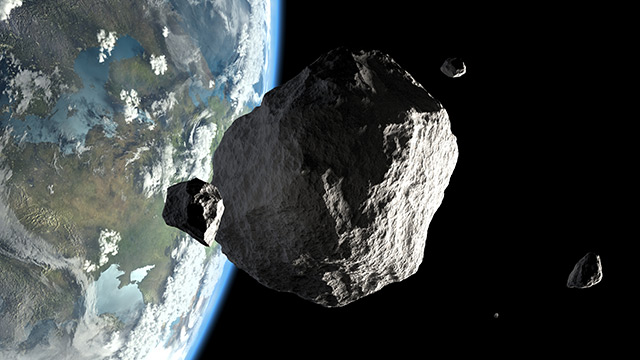NASA’s plan for new asteroid-hunting telescope could be ready by 2025 if it receives funding of about $500-$600 million
09/21/2020 / By Virgilio Marin

The National Aeronautics and Space Administration (NASA) could be launching a new asteroid detection system by 2025 if the space agency receives the required funding of about $500 to $600 million.
New equipment had been proposed for years, but it wasn’t until asteroid 2019 OK nearly hit Earth in July last year things started moving forward. The space rock, which was the size of a football field, was only detected a day before its closest approach to the planet. It came within 44,300 miles to Earth, which was considered a near-miss in astronomical terms. If it hit, asteroid 2019 OK would have caused localized damage to a 50-mile area.
The close shave revitalized the discussion on planetary defense and exposed the blind spots in NASA’s detection technologies. “This one did sneak up on us,” said Lindley Johnson, NASA’s planetary defense officer and program executive of the Planetary Defense Coordination Office (PDCO).
“[It] is an interesting story on the limitations of our survey network,” he added.
NASA’s asteroid detection initiatives through the years
In 1998, Congress tasked NASA to look for 90 percent of all near-Earth objects (NEOs) that are bigger than two-thirds of a mile. The congressional request was made due to the media frenzy surrounding asteroid NEO 1997 XF11. Research at the time predicted that the half-mile-wide space rock could impact Earth in 2028.
The forecast turned out to be a dud, according to more a thorough analysis by a team at NASA’s Jet Propulsion Laboratory (JPL). But it did bring attention to the threat posed by NEOs. In 2005, Congress asked NASA to track a further 90 percent of all NEOs that are at least 450 feet by 2020. Since then, more than 20,000 NEOs have been cataloged.
Many of the asteroids newly discovered by NASA were detected by the NEOWISE spacecraft. NEOWISE is the re-activated WISE spacecraft, which was shelved in 2011 after going on a space mission for about a year to survey the inner solar system. In 2013, it was assigned to another mission, this time to search Earth’s neighborhood for potentially hazardous comets and asteroids. Through NEOWISE, NASA has uncovered 34,000 new asteroids, including 135 NEOs. (Related: Astronomers detect closest asteroid to fly by the Earth six hours too late.)
But last July’s close run-in was missed by NEOWISE, resurrecting NASA’s previous proposal to create a new space telescope.
New telescope to improve upon current telescopes
The revitalized project, called the NEO Surveillance Mission, is under the PDCO. It will be based on the space telescope NEOCam, which was first proposed by NASA in 2013 but got bumped by other space projects. The National Academies of Sciences, Engineering and Medicine made an analysis of the situation and recommended that planetary defense initiatives should be given equitable backing as a science initiative.
The new telescope will be space-based and use infrared detection technologies. It will be launched in a spacecraft that is planned to orbit at the Sun-Earth L1 halo, a location free of the blind spots of a ground-based vantage point. It will be equipped with an infrared sensor, which is more effective than equipment that uses visible light to detect space objects.
“[Some space rocks] are as dark as printer toner, and trying to spot them against the black of space is very hard,” said JPL’s Amy Mainzer, who is one of the astronomers leading the proposed mission. What her team has designed will give people more time to mount a defensive strategy, said Mainzer. Through this new telescope, NASA aims to find 65 percent of undiscovered NEOs in 5 years.
All NASA needs is $500 to $600 million. If the agency receives the funding, the NEO Surveillance Mission can be launched by 2025.
Space.news has more on NASA’s planetary defense initiatives.
Sources include:
Submit a correction >>
Tagged Under:
asteroid detection technology, asteroid impact, asteroids, comets, congress, diaster preparedness, disaster, infrared sensor, NASA, near-Earth asteroids, potentially hazardous objects, Space
This article may contain statements that reflect the opinion of the author
RECENT NEWS & ARTICLES
COPYRIGHT © 2017 REAL SCIENCE NEWS





















